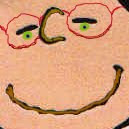1) Saving Adobe Doc or Word Doc: a) It is easy to save Adobe File as a PDF: Simply go to File>SaveAs and in the format drop down menu choose Adobe PDF. (Remember to change the name if you want to keep your original as an .ai or a psd. Otherwise it will override your original file)
b) For InDesign go to File/PDF Presets
c)For a Word Doc, go to File/Print and the Bottom Left of the Window, Click PDF/SaveAsPDF
2) Saving Photoshop and Illustrator Layers in a PDF: This is also simple to do. With all the layers visible choose File/SaveAs and in the format drop down menu choose Adobe PDF and click save. Another menu will come up. In the Adobe Version Menu choose Adobe Reader 7.0 (this version allows you to save layers while older ones do not) (The pages section of this document will be muddled if the layers were not for one image.)
3) Saving Photoshop and Illustrator Layers as pages in One PDF file. This is a little more difficult to do, but will give you the best results when wanting to display several images that exist in one file as pages in a PDF.
a. Open the original file and make visible the first layer that you want to be page 1.- Save the file as a PDF- File/SaveAs
- You do not need to change the name (See above for saving one image)
- In the “Save Adobe PDF” Window, Check, Embed “Page Thumbnails” and “View PDF after saving”.
- Click Save as PDF.
There should now be 2 PDF’s open one in the original application (ai, psd…) and one open with Acrobat Reader
b. Save the .pdf open in Acrobat Reader with a new name
- Click on the .pdf open in Acrobat Reader
- Click File/Saveas and change the name of the file
- At the left of this PDF, click the pages tab. You should see the visible layer saved as a page from your file.
- Click on this page icon, to highlight it
c. Save the next visible layer in the .pdf open in the original application.
- Now toggle back (F9) to the .pdf open in the original application and choose the next layer from page 2
- click File/ Save ( S)
d. Insert Page 2 in the .pdf open in Adobe Reader
- Toggle back to the new PDF open in adobe reader and with page 1 highlighted
- Go to Document>InsertPages
- Choose the original file with the new visible layer saved
- Click open and ok. Page two should appear.
e. Repeat this process until all desired pages are created.
4) Saving Multiple Files as pages in One PDF file.
There is a great video tutorial on the CS3 Online Tutorial Site-look under Adobe Acrobat.

























